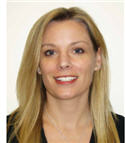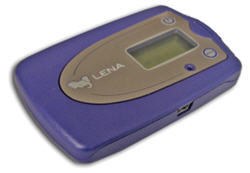Interview with Mia Moe, Director of Communications, LENA Foundation
Linda Schreiber:Today I am happy to interview Mia Moe, the Director of Communications for the LENA Foundation. Mia has been with Infoture, Inc. since 2005, as a member of the product development team and also as Director of Communications. Mia, thank you for agreeing to be interviewed about the LENA
 Linda Schreiber:Today I am happy to interview Mia Moe, the Director of Communications for the LENA Foundation. Mia has been with Infoture, Inc. since 2005, as a member of the product development team and also as Director of Communications. Mia, thank you for agreeing to be interviewed about the LENA Software System and the LENA Foundation. My understanding is that LENA was developed by Infoture, Inc. but continues with the nonprofit organization, the LENA Foundation. What's your role with the foundation?
Linda Schreiber:Today I am happy to interview Mia Moe, the Director of Communications for the LENA Foundation. Mia has been with Infoture, Inc. since 2005, as a member of the product development team and also as Director of Communications. Mia, thank you for agreeing to be interviewed about the LENA Software System and the LENA Foundation. My understanding is that LENA was developed by Infoture, Inc. but continues with the nonprofit organization, the LENA Foundation. What's your role with the foundation?Mia Moe: My role with the LENA Foundation is Director of Communications, which means that I oversee all written and electronic materials, including our website, product materials, software manuals, reports and explanations, as well as all materials to support the research and sales departments. I also support product developmentas a user of the LENA System myselfand work to make the product as people-friendly as possible.
Linda: What's the mission of the LENA Foundation?
Mia:The purpose of the foundation is to develop advanced technology for the early screening, evaluation, research, and treatment of language and developmental delays and disorders in children and adults.

Linda:Then speech-language pathologists (SLPs) should know about it. Tell me more.
Mia:LENA is the world's first automatic spontaneous speech data collection and analysis tool. The system consists of three partsthe software, the digital language processor (DLP), and the clothing required so the DLP can be worn for an hour a day to 16 hours a day. Essentially, the DLP captures all the audio information from the child's worldhow many words are spoken to them, the number of conversational turns, child vocalizations, TV, noise, radioany sound that is made in the vicinity of the child. Once this audio data is collected, the user connects the DLP to their PC and the audio file transfers to the software, and then the software processes the data and produces reports.


Linda:This sounds like a gift for speech-language pathologists. Who did you intend to target with this software system? Who might your buyers be?
Mia:The software system can be used by anyone who wants to look into a child's natural language environment. An SLP can use it as a prescreener, to find out a little more about the child's development and environment, before conducting a comprehensive evaluation. Researchers can use it to easily collect massive amounts of dataabout child vocalizations, adult interactions, impact of television, initiation and response timesall to expand current research or answer new questions about child language development. The groundbreaking feature of LENA is that it provides people working in child language development with a real-time window into a child's natural language environmentand it does so with automatic analysis.
Linda:How impressive! What are some other benefits of LENA?
Mia:Some other benefits of LENA are that you can find out how a child acts in a comfortable environment. You can gather a full day of representative language data and automatically process that dataso you have more complete information without expanding the labor involved. Anyone who has been around children knows that there are good days and bad days, there are ups and downs within a day. If you assess a child in an hour, how can you be sure that hour represents what the child is capable of? But if you have data from a whole day, coupled with a professional interaction with the child, you've expanded your knowledge of that child significantly, which could lead to more valid information and more targeted intervention. Another important feature is the fact that the reports can be shared with parents, providing them with clear information about what is happening with the child during the day. And our experience with providing parents with these reports is that their behavior changes; they feel empowered and excited.
Linda:Through LENA, you (Infoture) have gathered some impressive data. What are some key points discovered?
Mia:Some of the key points we discovered were:
- Parents estimated that they talked more with their children than they actually did.
- Most language training for children came from mothers, with mothers accounting for 75% of total talk in the environment.
- Mothers talked roughly 9% more to their daughters than to their sons.
- Parents talked more to their first-born than to their other children, particularly first-born males.
- The more television time in a child's day, the lower his or her language ability scores tended to be.
- Parents of children with autism tended to talk less the more severe their children's symptoms were. Conversely, the stronger the child's language abilities, the more they talked.
- Parents are quite variable in the day-to-day amount they talk to their children, but given the opportunity to receive feedback they are able to increase the amount of talk consistently.
Mia:I believe SLPs should be aware of this data because it demonstrates that however wonderful the intentions of parents, without objective feedback about their behavior, they may have a difficult time providing their child with a strong and consistent language environment. Our data suggest that SLPs who use LENA to gain more insight about a child's language environment and who then share the information with the parentsreally making the parent a full and informed partner in the remediation processwill see an improvement in the implementation of their applied interventions.
Linda:Where can SLPs read more about the data you've collected and analyzed?
Mia:Anyone can read more about our data collection efforts and research on our website: www.lenafoundation.org. We would also love to talk with anyone about implementation ideas, research suggestions, and any product feedback ideas they have.

Linda:The software has a speech recognition component. Would LENA be a feasible tool for SLPs who are collecting speech and language samples in the public schools, not necessarily for research purposes?
Mia:Our software is based on speech recognition components, but we cannot automatically transcribe what a child is saying. We do automatically segment speech into speaker ID categories (identifying the source of each sound segment). However, an SLP working in a public school can still use LENA for many purposes; we currently have several systems being used in public schools. For example, some SLPs find the LENA reports useful solely for intervention and educational program adjustments and others have used the reports in IEP meetings.
Linda:Your website states you have research behind everything you do. How so?
Mia:We will not put out any product that has not been thoroughly researched and shown to be effective. We have rigorous standards for conducting research and continuously work with outside research institutions and universities to conduct their own studies to verify the effectiveness of our assessments and system.
Linda: You have a Scientific Advisory Board.
Mia:Yes. During product development, we meet with the Scientific Advisory Board twice a year and present the current state of each of our research studies and products. After our presentation, the board reviews our materials and provides us with feedback to guide our next steps.
Linda:Where can readers find more information about LENA?
Mia:Readers can find out more about LENA at www.lenafoundation.org
Linda:Mia, thanks for sharing this valuable information with our readers.
Readers, also, watch for future postings of LENA Foundation research reports at www.speechpathology.com The Power of Talk will be posted on April 27, 2009.